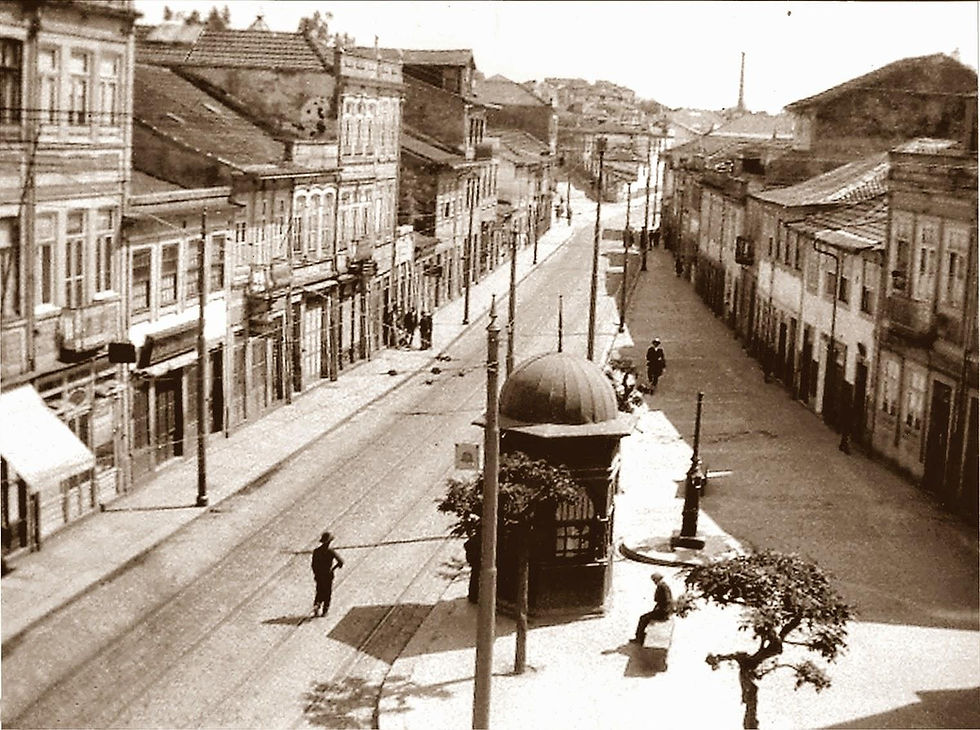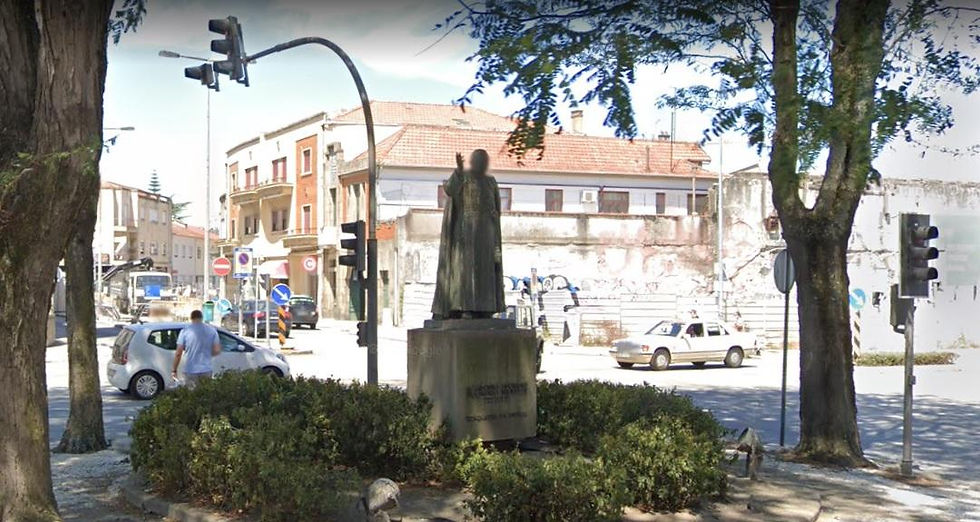Area of Carvalhido: Porto
- Mário Rocha
- Dec 16, 2021
- 4 min read

The Carvalhido area is located north of the city close to the VCI and the Prelada hospital.
As far as toponymy is concerned, the name Carvalhido means a forest covered with oaks, that was located in this place. Located on the outskirts, it was a place for Casais (rural properties, agricultural fields) and, fundamentally, a place of passage to and from Porto.
After the D. Pedro liberal troop's victory, this place is known as Exercito Libertador square in honor of the “7500 brave ones of Mindelo”, liberal troops’ nickname, who spent the night in this area before arriving at Porto.
In regards to this important historical fact, Carvalhido is directly associated with the old “9 brothers” road. A path that connected the Porto’s downtown (from Porta do Olival belonging to the Fernandina wall) to Vila do Conde and then on to Galiza. It is important to highlight this itinerary for its crucial access to the city.
It is worth mentioning a significant number of heritage and cultural points of interest in the area. Thus, starting by positioning ourselves at the intersection of Av. França - Av. Conselho da Europa and Prelada street, it is possible to see the former Porto’s Bishop statue - D. António Augusto de Castro Meireles. Designed by the sculptor Henrique Moreira, with a studio in Guindais, it was built in 1955 and serves to honor the creation of the Carvalhido parish.


At the same time, although physically it is not possible to demonstrate, here were placed two pyramids in the shape of an obelisk that aimed to mark the beginning of the Prelada property that stretched for several hectares towards the North. In 1937, these monuments were taken to the Passeio Alegre garden due to the urban pressure that was felt at the time.

Regarding Prelada estate, this was a property of quite remarkable size with a dense forest where large wild animals lived – which was the reason why hunting in this place was frequent. Designed by Nicolau Nasoni between 1743 and 1748, it was the largest landscape architecture project by the italian. Inside the farm, it is possible to find a stately home of the Noronha de Menezes family linked to the royal house. Although this great project was unique in the italian’s long work, it should be noted that the house is unfinished with only one tower (unlike the Freixo's palace by the same architect).

In the beginning of the 20th century, this place was home to a film production company and a textile factory. The first was called Invicta film. Alfredo Nunes de Mattos was the technical manager and Henrique Ferreira Alegria the artistic director. This company initially dedicated itself to national advertising tapes and news tapes, such as the coverage/ documentary of the shipwreck of the Veronese ship in February 1913 in Boa Nova, Leça. With the facilities (studios, laboratories and offices) located here at Prelada, in 1920, this film production company dedicated itself to feature films. In association with the famous French production company Pathé-Fréres, it conceived films such as “Frei Bonifácio” from 1918 or “Rosa do Adro” from 1919.

At the end of the 1920s, due to financial difficulties, the company ended its activity and the facilities were acquired by Fonseca and Faria ltd, creating the Carvalhido Textiles Factory there. This textile company that worked with dyeing, printing and finishing closed in 1969.
Finally, it should also be mentioned Sonoscopia. This cultural association created in 2011, is a point of attraction with regard to experimental music and sound research. It has a constant and sustainable program, giving great importance to educational activities.

At the intersection of Oliveira Monteiro street and the 9 de Julho street, it is possible to find the Senhora do Padrão Cruise. It was erected in 1738 to pay homage to the devotion and dedication of pilgrims walking towards Santiago de Compostela. In 1993, it was classified as a city council interest and in 2000 a stone structure that surrounded this Cruise in order to protect it was removed.
At the base, it is possible to see an inscription that says: "Louvado seja os tempos de valores virtude lisura ozias."

Down below we come across Amarela property [Quinta Amarela]. It is worth noting the historical relief of this property in this area. This Amarela estate is located at Oliveira Monteiro street but until the construction of this road, second half of the 19th century, it was connected to 9 de Julho street.
During the Siege of Porto it was occupied by the Absolutists In response, the liberals decided to invade the farm by setting the house on fire, eventually expelling the absolutists.
It had several owners and, about 100 years later, in 1921, the Arts Faculty of the University of Porto was transferred to these facilities.
Following the First World War, the Northern Patriotic Council - created with the objective of providing assistance to the victims and glorifying the Portuguese presence in this great armed conflict - with the need to increase the capacity of its facilities, in 1934, transfers to this place the Soldiers’s Children House coming from the Cedofeita street.
In 1938, the League of Fighters – a Portuguese military and ex-military personnel association - acquired the property. Nowadays, we can find a nursery, kindergarten and senior residence.


Lastly, there are two points of interest.
The former public slaughterhouse was built in 1844 when the construction of Serpa Pinto street, which connected it to Ramada Alta, was completed. Until it started to operate, the Fontainhas Slaughterhouse was in operation, but due to the bad smell and hygiene it was decided to use the Carvalhido Slaughterhouse.
In order to bring water to the city center, it is worth noting the Paranhos aqueduct that started at Arca d’Água, passing through the slaughterhouse and went up Serpa Pinto street. As a result, this area was well-off from the point of view of water extracting for daily use and, a proof of that, is the existence of several water sources that could be found nearby. Examples will be the indoor and outdoor water sources of the Slaughterhouse; the Natária fountain on Natária street and the fountain of 9 de Julho street built in 1770.

Mário Rocha | Contentor



Comments